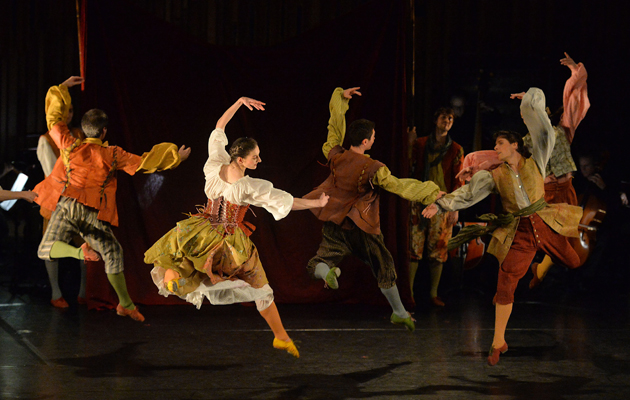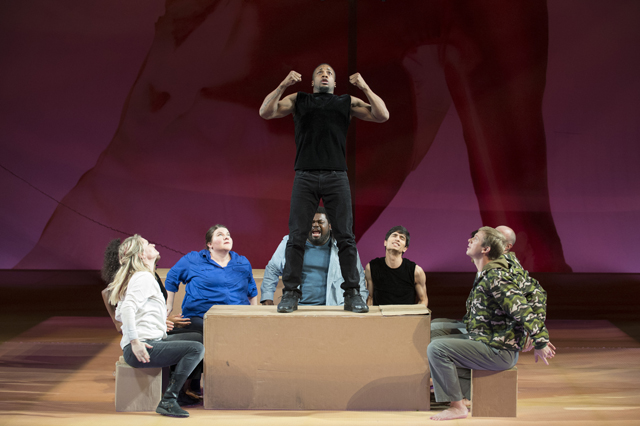Review: Jean-Philippe Rameau and John Adams
Our dance critic reviews two new productions.

Marking Jean-Philippe Rameau’s death 250 years ago, William Christie and the Choir and Orchestra of Les Arts Florissants presented a single performance at the Barbican of two courtly entertainments, Daphnis et Eglé, a ‘heroic pastorale,’ and La naissance d’Osiris. Mr. Christie described them as “the distillation of everything [Rameau] could do,” not dramas but exquisite moments in which “people just dance their sadness and joy and sing about it.”
Sharing the stage with the orchestra, the cast comprised the choir and six solo singers, all of whom danced, and six dancers, who also sang. Buoyant as laughter and rippling with perky beats and changes of direction, their bodies matched the subtle score like its natural twin, gently reflecting its emotional nuances.
The director, Sophie Daneman, and the choreographer, Françoise Denieau, devised the unmannered gestures together, enhancing the music by enlisting dance as its spirited partner. Perfectly balanced, they seemed to spring from the identical impulse so that, as Miss Daneman predicted, “the song moves without any pain into the dance.”
Peter Sellars took a different approach when directing the stage première of John Adams’ The Gospel According to the Other Mary, an oratorio based on the Passion. To draw us into the text, which he compiled from the Old and New testaments and modern sources, he chose to animate it, often word by word, deploying three dancers as counterparts to the singers and a fourth dancer as the visceral embodiment of the characters and the narrative’s charged atmosphere.

Mr. Sellars’ desire to “set the Passion story in the eternal present” may explain the participation of the astounding flex dancer Banks, whose physical expressivity would enrich any music. A disciplined fusion of rhythmic jerks, fractured poses and extravagently fluid contortions, flex resembles break dancing but sprang from a Jamaican street style that made its way to Brooklyn.
The dancers who shadow the singers switch identity as the narrative demands, intensifying the music’s dramatic effect. Banks, however, moves through the Passion like an elemental force. You cannot take your eyes off him, and you won’t quickly forget his artistry.
The Gospel According to the Other Mary remains at English National Opera until 5 December. www.eno.org
Sign up for the Country Life Newsletter
Exquisite houses, the beauty of Nature, and how to get the most from your life, straight to your inbox.
Rameau et la scène, exhibition at the Bibliothèque Musée of the Palais Garnier. 16 December to 8 March 2015. www.operadeparis.fr
The Language of Classical Ballet by Flavia Pappacena, published in English in 2012 by Gremese with more than 400 illustrations, explores 18th-century classical ballet and stagecraft in fascinating detail. www.gazellebookservices.co.uk
-
 Six rural properties with space, charm and endless views, as seen in Country Life
Six rural properties with space, charm and endless views, as seen in Country LifeWe take a look at some of the best houses to come to the market via Country Life in the past week.
By Toby Keel
-
 Exploring the countryside is essential for our wellbeing, but Right to Roam is going backwards
Exploring the countryside is essential for our wellbeing, but Right to Roam is going backwardsCampaigners in England often point to Scotland as an example of how brilliantly Right to Roam works, but it's not all it's cracked up to be, says Patrick Galbraith.
By Patrick Galbraith